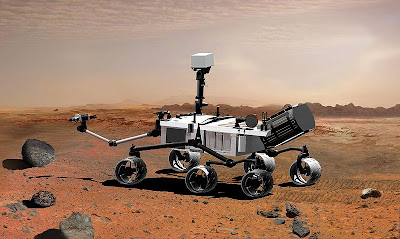MEN WANTED FOR HAZARDOUS JOURNEY. LOW WAGES, BITTER COLD,
LONG HOURS OF COMPLETE DARKNESS. SAFE RETURN DOUBTFUL.
HONOUR AND RECOGNITION IN EVENT OF SUCCESS.”
(ad attributed to Shackleton in London papers)
Bizarre lunar scientists — academics who have NEVER cut metal, much less designed human-rated missions — take it upon themselves to advocate “testing Marian hardware on the moon, first.” This is cowardly and unacceptable.
.
It is astonishing lunar scientists — some of whom actually refer to the moon as a “planet” — are quick to declare the utility of Martian ISRU “practice” on the moon, effectively misleading the public into thinking Lunar architectures are applicable to Martian missions.
Pause should be taken when funds for other NASA programs (such as far-side L2 radio telescopes and robotic missions to Europa) are squandered in this bizarre angle to the Mars/Moon debate; an entire Mars base can be chilled in vacuum chambers at Ames for 1/1,000th the cost of Mars simulation on the moon. This would be safer, provide greater testing opportunities, and release funding for many other beautiful endeavors NASA ought to pursue in addition to Martian settlement.
We will settle Mars and the rest of our solar system without lunar overhead, without lunar rovers, without lunar habs, lunar SBSP, lunar greenhouses, lunar life support, lunar recycling, lunar space elevators…or any lunar nonsense. Mars is the only location in our solar system with enough native resources to support a thriving society of initially ten to twenty, then tens of thousands, then finally hundreds of millions. (For Martian settlement there is no need to transport elements and basic resources from Earth as would need to be done for even mere lunar “research facilities”.)
Settlement of Mars will start when — and only when — human beings like us (you, friendly reader) decide humans must settle Mars. Not for profit, not for resources, not even for science — but to settle Mars. Permanently.
A lunar “colony” dependent upon the scientific literacy of an American president does not qualify humanity as spacefaring. The moon will never have a kindergarten, and, being only two days from Maui, will always be susceptible to abandonment and closure. Apart from a few bored and boring grad students dreaming of surfing on Earth, odd tourists out for a gosh and golly stroll, and robot repairpersons with family in Houston, humans will never return the moon. NEVER.
PROBLEMS WITH ‘MOON FIRST’ LIE IN THE PERSONALITIES OF MOON FIRST ADVOCATES
Personality infuses most engineering solutions. There ought to be a term for the personality component of engineering. Two engineers can reach the same goal but through different means, simply because of decisions which can only be ascribed to individual personalities. Engineers may even advocate slightly different goals attainable with the same tools, etc., for no other reason than ultimately their personalities. One engineer might be risk-adverse, another impatient with bureaucrats and overseers; one may favor small steps, another bold insightful leaps-of-confidence…each may even achieve the same results, possibly within the same cost and risk parameters, but, through very, very different means…reflective of their individual personalities.
For example, given the task of driving across the country “as soon as possible” two engineers might accomplish this in very different ways: one might map the trip by hand using a florescent highlighter, call ahead to make hotel reservations, even plan restaurant stops days in advance. He or she may create a multi-page itinerary in triplicate, backed up online, and programmed into an audio GPS device. All of course pre-approved by someone else. Another engineer might just toss some clothes, a laptop, and an iPhone in the car and take off — assuming gas stations and hotels will be there when needed. The first person takes three weeks to plan the trip, the other arrives in three days. No objectively quantifiable mathematical formulas are involved — each trip is almost entirely a reflection of personality. There ought to be useful, working terms to describe this phenomenon: an engineer’s own personal sense of adventure and courage affecting engineering solutions.
Psychology plays an especially important role in mission planning. Moon First advocates succumb to a 1950s fantasy of “If in Space then a Base.” This combines with “Closer is Safer” to create a vortex from which lowbrow unambitious academics seem unable to escape. Lunar advocates dismiss “Mars-In-My-Lifetime” as exhibiting an unwarranted sense of entitlement. Instead they are proud to conceive of Moon First missions as “realistic, pragmatic, small steps” not dependent upon “exciting” public support. Each side sincerely wants humanity to become a spacefaring species…”as soon as possible.” (Institutional and cultural inertia — such as job security and personal reputation — affects advocates on both sides.)
Those on the side of Mars First contend that a Mars mission must be conceived of as a Settlement Mission, from the start: with a 180 day transit there can be no “Flags and Footprints” mission to Mars. The end goal of settling Mars is not to engender public “excitement about space” but: to settle Mars. To go to Mars — we must go to Mars. Now.
Once we go, we should stay. As former Lunar Astronaut Buzz Aldrin — now a vocal Mars First advocate of “Mars to Stay” — has said, “They need to go there more with the psychology of knowing that you are a pioneering settler and you don’t look forward to going back home again after a couple a years. At age 30, they are given an opportunity. If they accept, then we train them, at age 35, we send them. At age 65, who knows what advances have taken place. They can retire there, or maybe we can bring them back.”

Kelly Johnson’s
Skunk Works — Lockheed Martin’s Advanced Development Programs — was the most successful, intellectually ambitious, courageous team of engineers ever assembled. Kelly understood the psychological component of engineering solutions.
Unfortunately academia does not teach proactive alpha action — in fact, the type of people who are attracted to and thrive in academia are repulsed by alphas, afraid of action, and would much rather teach formulas and testable procedures than the Personality of Competence.
Fortunately Kelly wrote an autobiography to contextualize Skunk Works principles for posterity.
The basic operating rules of a Skunk Works are:
- The Skunk Works manager must be delegated practically complete control of his program in all aspects. He should report to a division president or higher.
- Strong but small project offices must be provided both by the military and industry.
- The number of people having any connection with the project must be restricted in an almost vicious manner. Use a small number of good people (10 percent to 25 percent compared to the so-called normal systems).
- A very simple drawing and drawing release system with great flexibility for making changes must be provided.
- There must be a minimum number of reports required, but important work must be recorded thoroughly.
- There must be a monthly cost review covering not only what has been spent and committed but also projected costs to the conclusion of the program. Don’t have the books ninety days late and don’t surprise the customer with sudden overruns.
- The contractor must be delegated and must assume more than normal responsibility to get good vendor bids for subcontract work on the project. Commercial bid procedures are very often better than military ones.
- The inspection system as currently used by ADP, which has been approved by both the Air Force and Navy, meets the intent of existing military requirements and should be used on new projects. Push more basic inspection responsibility back to subcontractors and vendors. Don’t duplicate so much inspection.
- The contractor must be delegated the authority to test his final product in flight. He can and must test it in the initial stages. If he doesn’t, he rapidly loses his competency to design other vehicles.
- The specifications applying to the hardware must be agreed to in advance of contracting. The ADP practice of having a specification section stating clearly which important military specification items will not knowingly be complied with and reasons therefore is highly recommended.
- Funding a program must be timely so that the contractor doesn’t have to keep running to the bank to support government projects.
- There must be a mutual trust between the military project organization and the contractor, with very close cooperation and liaison on a day-to-day basis. This cuts down misunderstanding and correspondence to an absolute minimum.
- Access by outsiders to the project and its personnel must be strictly controlled by appropriate security measures.
- Because only a few people will be used in engineering and most other areas, ways must be provided to reward good performance by pay not based on the number of personnel supervised.
“The Skunk Works” wrote Kelly Johnson, “is a concentration of a few good people solving problems far in advance – and at a fraction of the cost – of other groups in the aircraft industry by applying the simplest, most straightforward methods possible to develop and produce new projects. All it is really is the application of common sense to some pretty tough problems.”
A PDF of Chapter 16 from Kelly’s autobiography — the section in which he writes explicitly about Skunk Works — may be downloaded here:
Mars advocates are bored to tears with small-minded cowards telling them “if we were just less ambitious” we would already be (languishing) on the moon; or “if we didn’t try to get the public excited about space” we would recognize the small pragmatic steps necessary to become spacefaring as a species. There is NOTHING pragmatic about spending another fifty years and hundreds of billions of dollars going no where but LEO/Luna. Especially to satisfy the worries of those who succumb to lowbrow “If in Space then a closer base” fallacies.
THE MOON IS A SIREN’S CALL!
 “I’ve been very interested in the Humans to Mars movement—the ‘Mars Underground’—and I’ve done a tremendous amount of personal research for a novel, a miniseries, and a 3-D film.”
“I’ve been very interested in the Humans to Mars movement—the ‘Mars Underground’—and I’ve done a tremendous amount of personal research for a novel, a miniseries, and a 3-D film.” These very rough drafts of Mars mission equipment were created by Digital Domain nearly ten years ago to accompany Cameron’s Keynote Address. Although they were of high-quality for CG at that time, he nevertheless apologized for not being able to bring final renders. The point of showing these images though was to demonstrate his support for Mars Direct and in particular humans to Mars; Cameron wanted to show fellow space enthusiasts he could be relied upon to “get the facts right” and — that this is important. (As an aside, during his keynote the name for Factual Fiction was conceived: if we could get the facts right a “New Mars” in the public’s imagination might lead to a rethinking of humans to Mars.)
These very rough drafts of Mars mission equipment were created by Digital Domain nearly ten years ago to accompany Cameron’s Keynote Address. Although they were of high-quality for CG at that time, he nevertheless apologized for not being able to bring final renders. The point of showing these images though was to demonstrate his support for Mars Direct and in particular humans to Mars; Cameron wanted to show fellow space enthusiasts he could be relied upon to “get the facts right” and — that this is important. (As an aside, during his keynote the name for Factual Fiction was conceived: if we could get the facts right a “New Mars” in the public’s imagination might lead to a rethinking of humans to Mars.)





